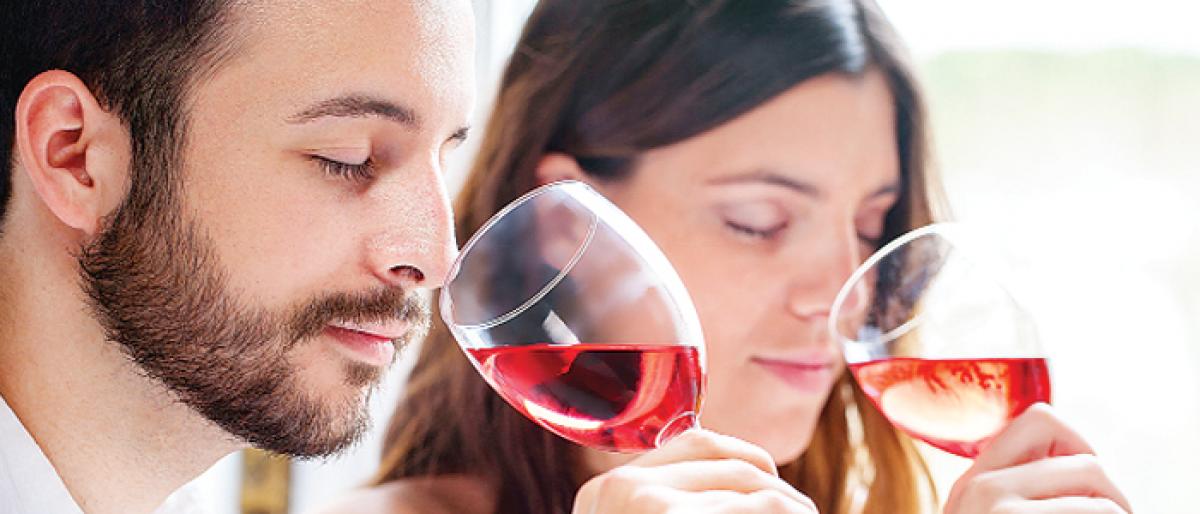Know your wine

The process of tasting wines is very easy If you follow simple rules and taste many wines regularly, you can be an expert very soon
The process of tasting wines is very easy. If you follow simple rules and taste many wines regularly, you can be an expert very soon
No special technique
There is no special technique for tasting and you can drink or eat whatever you like and still be a taster. It requires more focus when you are new to tasting, but overall it is similar to tasting food. In tasting, many of your senses are used – sense of vision, smell, taste and feel or touch.
The process
The tasting can be broken down into five basic steps of seeing, swirling, sniffing, sipping and savouring the wine. The first step is to evaluate the wine while looking at it in the glass. This gives many clues such as the likely age of the wine, whether it is still or bubbly and whether it is turbid or clear. Register the colour and also whether you liked it.
Usually when the glass is held at an angle, the core of the wine towards the centre of the glass is darker, whereas the rim is lighter. Older wines have broader rims, while younger wines generally have thin rims. With age, red wines fade, white wines develop deeper hues, while rose or pink wines become dull. The colour, thus hints at what is to come during the tasting process.
Building up the tempo
The next step swirling prepares the wine for the third step. Swirling allows air to mix with the wine and then releases it when you stop. So, when you sniff the wine by bringing your nose close to the glass, the air releases all the aromas present in the wine. When you taste a sparkling wine or wine with bubbles, the bubbles do this job of bringing the aromas to your nose.
This sniffing step allows you to record how the wine smells and compare with the smells you know. Again, register the smell to compare with other wines that you may taste later. A simple wine will give pleasant aromas without any off odours, while a good quality wine will have multi-layered pleasant aromatics which remind you of flowers, fruits, spices, etc. A young wine will have fresh fruity and floral aromas from the grapes while older wines will have developed characters like leather, hay, and even mushroom or earthy aromas.
The actual tasting
Sipping the wine is the most important step and here you take a small amount of wine and move it all around your mouth. The wine touches all the different taste-buds on the tongue and the mouth giving us many clues. Slurping a small amount of air during this time allows the aromas to reach your nasal passage enhancing the flavours in the wine.
Again, record and register the various senses – sweetness, tanginess, bitterness, weight, tannin levels, alcohol level and whether all these are in balance. Register the various flavours and off-flavours if any. A good wine will give a harmonious sensation with many different flavours. Young white wines are light, fresh and tangy, also dense and tannic in case of young reds. Older wines will be slightly heavier in case of whites and mellower in case of reds.
The ultimate and most enjoyable step is savouring the wine and drinking it. Here you notice the finish or the length of time the flavours stay in the mouth. Was the tasting enjoyable and good flavours lingered in your mouth? In that case, you know that the wine was of good quality.
Though most experts advocate going about the tasting in the manner listed above, you can focus on what you enjoy the most. Enjoy the tasting, the sound of a cork popping or a screwcap seal breaking and the accompanying food. This is the good life!
By: Ajoy Shaw
The writer is an Independent Consultant Winemaker and Wine Professional. He is also the consultant for Hyderabad-based Asav Wines.



















